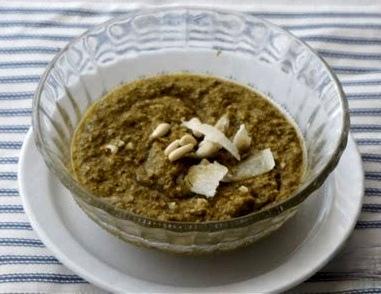One of the less well-known fish sauces is ນ້ໍາປາ (nam pa). No, I haven't misspelled 'nam pla'. ນ້ໍາປາ (nam pa) is the Lao version and pronunciation. Laos has some of the most interesting fish sauces.
There are basically two types of fish sauce found in this small land-locked country sandwiched between Thailand and Cambodia.
າປາ (nam pa), made from fermented fish is the basic version and similar in appearance to the similarly named Thai type. However, it is stronger and funkier smelling.
However, more popular is ປາແດກ (padaek), an unfiltered product which is thicker than nam pa and often contains lumps of fermented fish. It is somewhere between a sauce and a paste.

Padaek
It is also much stronger in flavour, depending on the fermentation time (between one and five years), but essential in ส้มตำ (som tam), green papaya salad which although usually associated with Thailand, actually originated in Laos.
Fish sauce also appears in laap, raw or rare beef salad. Yes, this too originated in Laos. And yes, there is no /r/ sound in the word.
The Isaan area of Thailand used to be Lao territory and the majority of the population is still ethnically Lao. There are, by far, more Lao people in Thailand than in Laos - 17 million in Thailand; 8 million in Laos. So, you've probably eaten Lao food even if you think you've only eaten Thai.
Laos too has a fish sauce dip. This is known as ແຈ່ວ ສົ້ມ (transliterated as jeow som or jaew some, literally 'spicy sauce sour'). This is similar to the Thai prik nam pla (น้ําปลาพริก), fish sauce being mixed with lime juice and chilli along with garlic and coriander leaf/Cilantro.
Lao sauces are not widely distributed but you can, should you wish and have extremely tolerant neighbours, make your own padaek.
Recipe here.
http://padaek.com/make-padaek-lao-fermented-fish-sauce-recipe/




